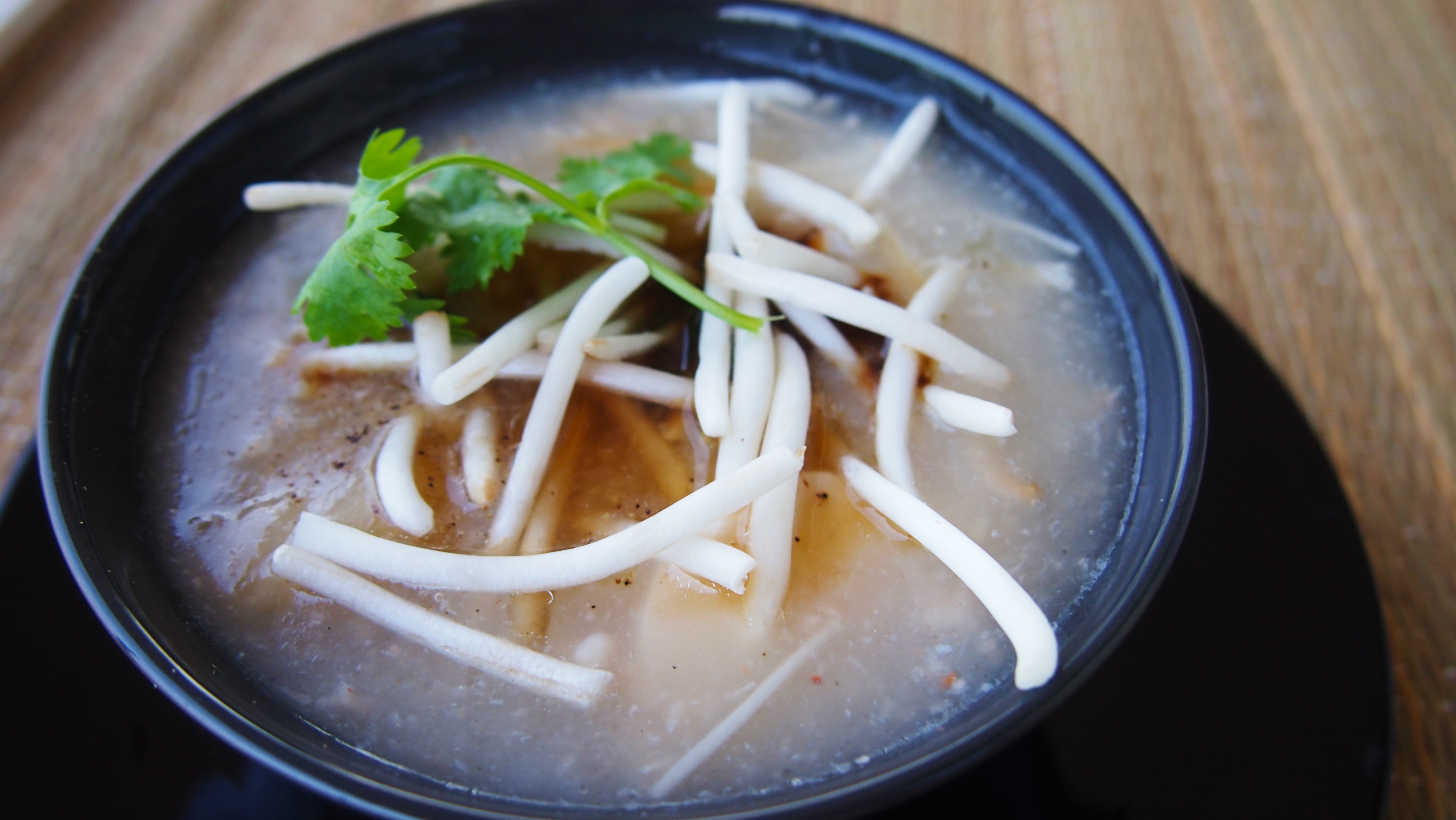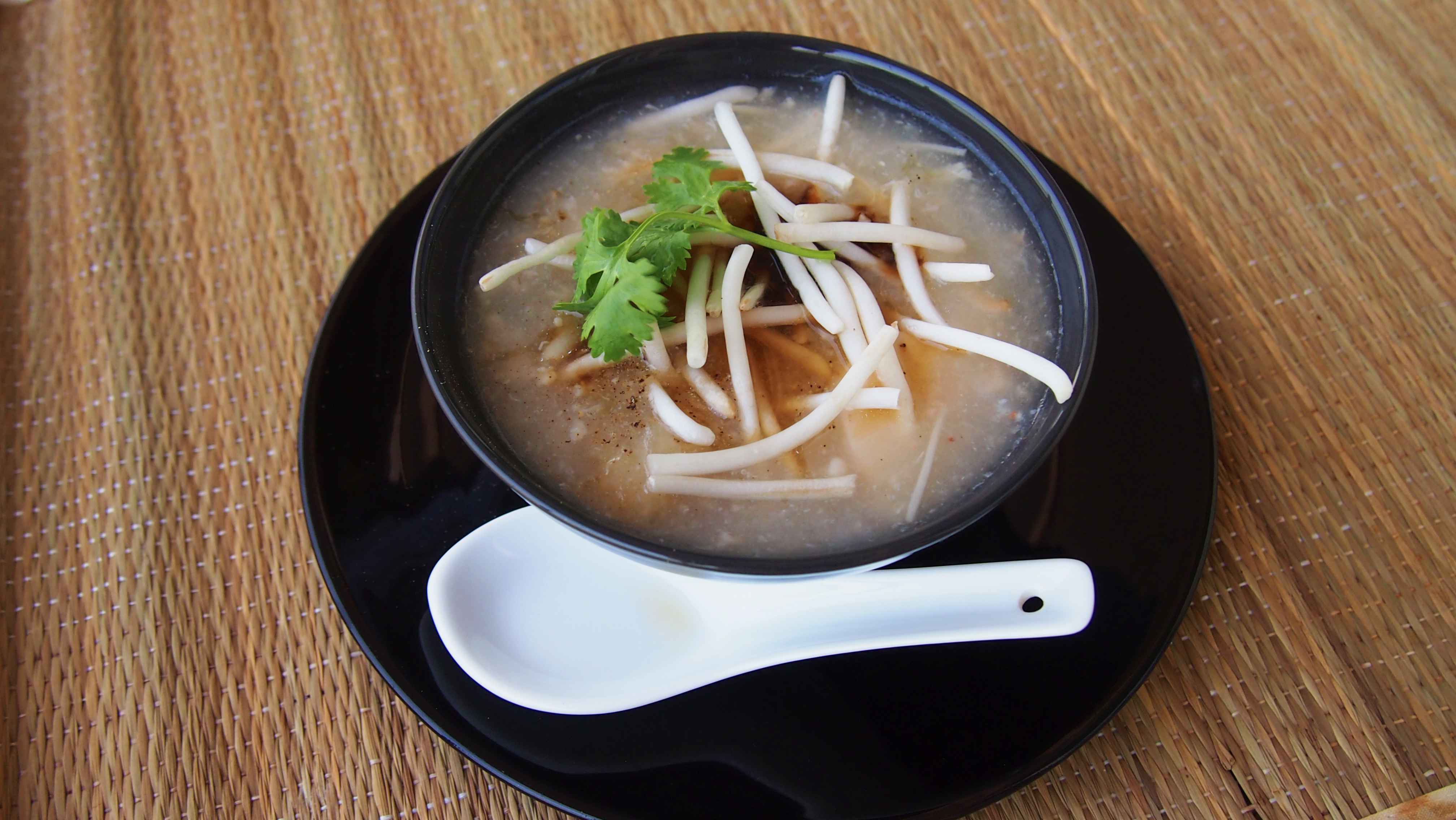
If you ever see the Chinese word ‘Geng’ 羹, it refers to a more anglo-american notion of soup – thick, gooey and very filling. This recipe will guide you through making one of the highest-rated Chinese delicacies – ‘Fish Maw Soup’ 鱼膘羹.
Fish maw is the thick fatty stomach lining of a fish. Like all Chinese delicacies, it used to be part of the collection of ‘rare foods’ (山珍海味). Back in ancient China, these foods came from the tropical south (in Southeast Asia) and were limited in supplies. Most of these, such as bird’s nest or sharkfin, were regarded as precious foods that only the rich and the nobles could afford. Hence they were a status symbol (still are), regardless of how they taste like. Secondly, because they were rare, a lot of care was taken in including very compatible and rich ingredients when coming up with recipes to cook them. Furthermore, in Chinese cooking, there is a philosophy that some things are eaten for their texture, and not for their taste alone. The fish maw is a case in point.
In modern times, with globalisation and free-market economy, some traditional Chinese delicacies can be farmed and harvested and sold at a more affordable price. Others, such as the sharkfin, are seeing their supplies depleted because of this marketisation. I do not eat sharkfin now, not because I think it is inhumane (we kill lots of other animals in worse manners in larger numbers in many ‘western’ countries, so why is the pot calling the kettle black?), but there is no sustainable way of consuming it right now. I also want to draw the attention to the fact that trawling is killing MORE SHARKS than the Chinese consumption of sharkfins, that deserves more attention than the unbalanced racist propaganda against the Chinese.
That being said, my recipe of fish maw soup combines the traditional basis of the sharkfin soup with the similar taste absorbing property of the fish maw. The Thais harvest the fish maw from huge fish, dry them and then deep-fry them for preservation. They are filled with large amounts of Omega-3 fish fats and collagen (crucial in keeping your skin supple). The only problem is that they have been deep-fried:
To prepare your fish maw, put them in a bowl and pour boiling water over them. Once a thick layer of oil forms after about ten minutes, drain and pat dry.
Ingredients:
- 1 soup chicken
- 2 litres water
- 5cm fresh ginger, crushed with the back of your knife
- 3 cloves garlic, crushed with the back of your knife
- 400ml Shaoxing rice wine
- 8-10 small to medium-sized fish maw (prepared as above)
- 1 can crabmeat (without bones)
- 1 bunch of Enoki mushrooms 榎茸/金針菇
- 5tbs corn starch
- 1 tube white silken tofu
- 100g soya beansprouts
- 1 sprig coriander
- Salt and pepper
- Dash of vintage dark Chinese vinegar
- Dash of cognac or brandy
Servings: 2 persons
Instructions:
- First we need to make the chicken soup. Clean and chop your chicken into parts and put it in a pot of water and 200ml of Shaoxing rice wine together the ginger and garlic. Bring to boil for about 2 minutes then cover, turn to low heat and let it simmer for an hour. The liquid level should be halved by then.
- While the stock is cooking, prepare your beansprouts by tearing the head and the root off one by one. Put aside.
- Turn off the heat, discard the ginger and the garlic, take the chicken out and let it cool. Take one thigh meat and shred the meat manually into thin long strips. Put that into the soup. You can save the rest of the chicken for other dishes.
- Wash and dry your Enoki mushrooms, cut away the roots and tear them apart and drop them into the soup.
- Open your can of crabmeat and pour everything (including the liquid) into the soup.
- Add 200ml of Shaoxing rice wine and the fish maw to the soup and bring it to boil.
- After 5 minutes of boiling when the fish maw has visibly softened, wet your cornstarch in a bowl of water and slowly stir it into the simmering soup to thicken it. Turn off the fire and add salt and pepper to taste.
- Prepare your serving bowls, cut up your silken tofu into cubes and place them in the bowls.
- Pour your soup in the bowls, garnish with a handful of beansprouts, topped with some coriander leaves.
- Present the soup with optional servings of vintage Chinese vinegar, Cognac or Brandy and ground pepper. Enjoy!
*Note:
- You can prepare your chicken stock over a longer period of time. I made mine over two days, so that the skin of the chicken even dissolved into the stock. The longer you make your stock the better the taste.
- I used canned crabmeat in this recipe. If you can find fresh crabs, just add your crab to the stock-making process. The only difference is when you take the meat off the shell, you only return it in the last stage of boiling before the thickening, so that the meat won’t disappear.
- You can find fish maw in all Thai provision shops. If the fish maw is very big, you can cut them up into rings after the boiling water treatment.
- I personally prefer adding cognac to brandy. Just a dash, otherwise the soup will taste bitter.




My Family Loved it. I am definitely sharing Guys, Thanks For sharing this Great Recipe. this recipe and this website with my friend. Hope they also love it. Thank you again for sharing such a great recipe.